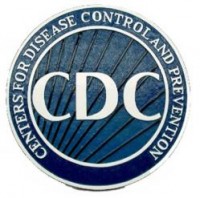More Than Half of HIV Patients Found to Have Long Gaps in Between Appointments
PHILADELPHIA — Only about 75 percent of HIV/AIDS patients in the United States remain in care consistently, according to new research from the Perelman School of Medicine at the University of Pennsylvania published online this week in AIDS. The study of patients across the United States is the first to provide a comprehensive national estimate of HIV care retention and information about patients who are most likely to continue their treatment over time.
“Helping patients with HIV stay in care is a key way to reduce their chances of getting sick from their disease and prevent the spread of HIV in the community. Our findings show that too many patients are falling through the cracks,” says the study’s lead author, Baligh R. Yehia, MD, a fellow in the division of Infectious Disease and the Health Policy Research Program at Penn Medicine. “The benefits of keeping patients in care are clear both for patients and the community at large, and it may even result in decreased health care costs by preventing unnecessary hospitalization for an acute illness.”
The researchers studied 17,425 adult patients cared for at 12 clinics within the HIV Research Network, a consortium that cares for HIV-infected patients across the nation, between 2001 and 2008. Just 42 percent of patients studied had what researchers defined as “no gap” in treatment — intervals of no more than six months in between outpatient visits — over the timeframe studied, while 31 percent had one or more seven- to 12-month gaps in care. Twenty-eight percent appeared to have gone without care for more than a year on one or more occasions. Since there is no gold standard on the best way to measure retention in care, the team used three different measures of retention to examine each patient’s visit record.
Women, white patients, older patients, male patients who were infected via sex with men, and patients who began treatment on Medicare (compared to those on private insurance) were all more likely to remain in care more consistently. Retention was also greater among patients whose CD4 counts — the measure of how advanced the disease is — were very low, at the point associated with AIDS, when they entered care.
The team suggests that their findings may help guide clinicians in assessing which patients are more likely to follow their prescribed visit schedule, and develop intervention strategies to improve their chances of adhering to their care. “Clinicians need to know what barriers to screen for, so our findings help to better define groups of patients who may require extra help to stay on track,” says the study’s senior author and Yehia’s mentor, Kelly Gebo, MD, an associate professor of Medicine at the Johns Hopkins University School of Medicine. Housing, transportation and financial problems, substance abuse and mental illness can all be contributors to problems with care retention, and patients who don’t have symptoms may not believe they’re “sick” enough to require regular visits with their providers.
Yehia also notes that a standardized criteria for determining the appropriate time between visits is needed, since patients who are at various stages in their disease, have other health conditions or certain social circumstances may require unique plans for care — thus making it hard to assess aggregate retention across the entire HIV population. And since patients may switch doctors, move frequently, go to jail or become institutionalized and still receive care during those times, the research team suggests additional studies that track patients across those circumstances, such as research involving data from insurance records.
Questions also remain about how HIV treatment retention may change as time passes during what has become, for many, a chronic condition spanning decades of their lives.
“It’s possible that as time goes by, some patients may become more regular users of care, while others may become complacent and skip appointments,” Yehia says. “We need to better pinpoint times when certain patients may be less likely to remain in treatment and find ways to ensure their continued care.”
In addition to Yehia and Josh Metlay, MD, PhD, also from Penn, other authors of the paper include investigators from Hopkins, Oregon Health and Sciences University, and the Agency for Healthcare Research and Quality.
News release courtesy of Penn Medicine.





